The Bible and Baptism: The Foundations of Salvation. By Isaac Augustine Morales, O.P. Reviewed by Randall Woodard. (skip to review)
The Obscurity of Scripture: Disputing Sola Scriptura and the Protestant Notion of Biblical Perspicuity. By Casey J. Chalk. Reviewed by Suan Sonna. (skip to review)
The Good, The Bad, and the Beautiful: History in Three Dimensions. By Joseph Pearce. Reviewed by K.E. Colombini. (skip to review)
Church Councils: 100 Questions and Answers. By Paul Senz. Reviewed by Garrett Quigley. (skip to review)
The Return of the Prodigal Son: A Story of Homecoming. By Henri Nouwen. Reviewed by S.E. Greydanus. (skip to review)
The Bible and Baptism – Isaac Augustine Morales, O.P.
Morales, Isaac Augustine, O.P. The Bible and Baptism: The Foundations of Salvation. Grand Rapids, MI: Baker Academic, 2022. 213 pages.
Reviewed by Randall Woodard.
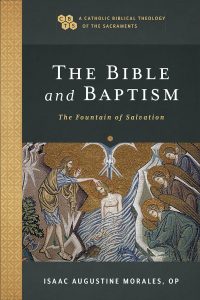 Dominican Father Augustine Morales (Providence College in Rhode Island) offers readers an outstanding work of scholarship with this text. His ability to blend biblical scholarship with historical and sacramental theology is commendable and makes this manuscript an incredible resource for a wide audience. This volume, which is a part of the Catholic Biblical Theology of the Sacraments series, has two sections. The first part follows the use of water in the Old Testament and covers water and its connection to life, death, freedom, and purity. The second part covers baptism in the New Testament in a thematic manner as well, covering Christ as the model and source of baptism, baptism “in the name,” dying and rising with Christ, being clothed in Christ, and baptism and new birth. Each chapter is written in a format that provides readers with incredible depth of analysis, but is written with the sense of a great teacher in respect to outline, summary, and not assuming too much from the reader.
Dominican Father Augustine Morales (Providence College in Rhode Island) offers readers an outstanding work of scholarship with this text. His ability to blend biblical scholarship with historical and sacramental theology is commendable and makes this manuscript an incredible resource for a wide audience. This volume, which is a part of the Catholic Biblical Theology of the Sacraments series, has two sections. The first part follows the use of water in the Old Testament and covers water and its connection to life, death, freedom, and purity. The second part covers baptism in the New Testament in a thematic manner as well, covering Christ as the model and source of baptism, baptism “in the name,” dying and rising with Christ, being clothed in Christ, and baptism and new birth. Each chapter is written in a format that provides readers with incredible depth of analysis, but is written with the sense of a great teacher in respect to outline, summary, and not assuming too much from the reader.
Rather than moving through the Bible book by book, Morales uses a thematic approach which provides readers with a more systematic engagement of water and baptism in both sections of the text. The author illustrates the historical context of passages while he engages outstanding biblical scholars and Fathers of the Church in his analysis. In the Old Testament section, Morales guides readers with serious academic depth, brings in different perspectives when appropriate, draws parallels to related books when addressing themes like life or death, and always connects his research and analysis to how we understand baptism as believers. In his chapter on the waters of death, for example, we see the author’s connection to St. Augustine and his analysis of the crossing of the Red Sea and how it is eventually applied to baptism. The use of slides to tie in saints and Fathers of the Church within each chapter stands out as a very positive way to draw the reader’s attention to the ways central figures like St. Gregory and St. Thomas support the biblical and pastoral reflections offered by Morales.
Likewise, Morales moves through important New Testament passages in the second part of the analysis. The author again organizes the chapters by theme and successfully ties together an impressive variety of New Testament passages for evaluation, while providing a systematic connection of the passages with depth, extensive research, and an outstanding ability to communicate clearly, offer valuable summaries, and share an immense volume of detail in a very manageable text. One additional strength of the book is the overarching theme of worship and our covenant relationship with God. His ability to dive deeply into the academic research, while providing people of faith a strong resource to understand their own participation in God’s plan through baptism is commendable.
The book is highly recommended due to its excellent scholarship, systematic approach, and pastoral dimensions. It would be excellent for an academic audience, including graduate students, but is not out of reach for a layperson as well. It could also be used in parish situations for adult faith formation, since it avoids academic jargon or language used to impress rather than communicate the faith to a wide audience. Morales has truly offered readers a great volume that evaluates the biblical passages connected to water and baptism and will help people to understand the meaning of baptism in a more developed manner.
Randall Woodard is director of the graduate program in theology and professor of theology at Saint Leo University (Florida). His doctorate is in systematic theology from Duquesne University and he specializes in sacramental theology and Catholic education.
The Obscurity of Scripture – Casey J. Chalk
Chalk, Casey J. The Obscurity of Scripture: Disputing Sola Scriptura and the Protestant Notion of Biblical Perspicuity. Steubenville, OH: Emmaus Road Publishing, 2023. 320 pages.
Reviewed by Suan Sonna.
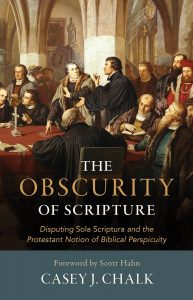 Casey Chalk argues in The Obscurity of Scripture that there are “irresolvable problems” with the Protestant idea of the perspicuity of scripture (henceforth, PS) which undermine “Protestantism, in any form, as a coherent belief system” (13–14) whereas the Catholic position toward scripture is “more logically and historically coherent” (16).
Casey Chalk argues in The Obscurity of Scripture that there are “irresolvable problems” with the Protestant idea of the perspicuity of scripture (henceforth, PS) which undermine “Protestantism, in any form, as a coherent belief system” (13–14) whereas the Catholic position toward scripture is “more logically and historically coherent” (16).
This book has two parts. The first, consisting of seven chapters, criticizes PS. Chapter one examines PS as defined within the “dominant Protestant traditions,” finding even therein “varieties” and “incompatible definitions” on offer (42). There are, for example, “broad” (Chalk’s term) definitions which will list out certain doctrines as being clearly taught in scripture without needing recourse to a magisterium or Tradition, but there are also “narrow” definitions which maintain that only “the core message” or that which is “necessary for salvation” will be clear (41).
Chapter two controversially argues that perspicuity is more foundational for Protestantism than sola scriptura. Chapter three clarifies what Chalk is and is not arguing. He is not claiming that scripture is “hopelessly obscure” nor that “people can’t accurately interpret a specific verse or set of series of verses” (70). Rather, he is disputing that “(1) Scripture is sufficiently clear” such that any reasonable Christian of good will “will be able to determine what is necessary to be saved,” “(2) that Scripture is sufficient . . . to resolve interpretative disagreements without recourse to an extra-biblical authority,” and “(3) that Scripture is sufficient to unify all Christians” (Ibid). Chapters four to seven defend these three claims on philosophical, ecclesial, sociological, and historical grounds respectively.
The second part presents and defends the Catholic position on scripture in five chapters (Chs. 8–12). Chapter eight offers a fine introduction to the magisterium’s role in interpreting the Apostolic Deposit of Scripture and Tradition. Chalk then argues in the ninth chapter that the Church Fathers rejected PS. Chalk is to be commended here for explaining the role of the Fathers in the Church’s life and in his argument rather than just carelessly citing them. Chapter ten handles scriptural passages cited in favor of PS and chapter eleven notes several passages in favor of there being a magisterium. The twelfth and final chapter answers eight common objections to the Catholic Church’s position on scripture.
This book has many strengths, but I will only mention three. First, Chalk offers copious citations when representing the thinking of Protestants and Catholics on these issues. He tends to provide full quotes rather than summarizing the source in his own words. Chalk is scrupulous in fairly representing Protestants and Catholics alike.
Second, Chalk’s argument is refreshingly self-aware. He is aware of how paradigms govern this debate and that PS is neither an obvious nor objective starting point (esp. 73–75 and 99–103). He urges instead, “We must attempt to step outside our own paradigm, by charitably considering another that does not presume perspicuity” (174). This insight alone, I think, makes the book a must-read for Catholic apologists and sympathetic Protestants.
Third, Chalk makes other fresh contributions to the debate. As previously stated, he disputes the prevailing consensus that sola scriptura rather than PS is the foundational doctrine of Protestantism. Although I am not entirely convinced, Chalk successfully argues that PS is more important than many (including myself) have appreciated. His observations on the harms of PS are also noteworthy. In brief, PS “demands that we assume the worst about others” if they, from our perspective, do not understand the “clear” meaning of scripture (129), and PS emboldens us into thinking that our particular interpretation is automatically the Bible’s plain meaning, hiding our own bias and limitations (esp. 101–102).
Although this volume has many strengths, there are still areas for improvement. There are numerous occasions where Chalk’s use of full quotes can break the reader’s focus and interest. When Chalk, however, maintains his voice and naturally weaves the quotes (or their relevant portions) into the discussion, the book reads elegantly. Chapter eight in particular excessively relies upon block quotes. On pg. 207, Chalk says that Epiphanius’ theology “includes high view of episcopal authority and Tradition.” An “a” needs to be inserted between “includes” and “high.” Also, Chalk uses “fulness” on this page, whereas the Church documents he cites use “fullness,” and so using “fullness” here would flow better (e.g., 273). Finally, the book struggles to feel unified, especially since the first and second parts are so different. Chalk’s conversion and personal story, for example, could have served as the unifying thread of both parts, meaning they should feature more prominently than at present (see Introduction).
Regardless, this book is a valuable and fresh contribution to the discussion. Chalk demonstrates himself to be a promising writer and Catholic thinker. Moreover, Emmaus Road should be proud of publishing another fine volume.
Suan Sonna is a Master of Theological Studies student at Harvard Divinity School. His area of focus is the New Testament and Early Christianity.
The Good, the Bad and the Beautiful – Joseph Pearce
Pearce, Joseph. The Good, The Bad, and the Beautiful: History in Three Dimensions. San Francisco, CA: Ignatius Press, 2023. 309 pages.
Reviewed by K.E. Colombini.
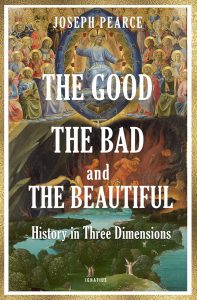 For those, such as this reviewer, who have suffered through mind-numbingly boring history classes in their youth, Joseph Pearce comes as a relief. In 2022, he provided a holistic summary view of English history through a truly Christian lens (Faith of Our Fathers: A History of True England), and in 2023 he applied the same view to two millennia of history of the Western world in this volume, with a different spin. He looks at three facets of man: as a pilgrim on the path to virtue (“homo viator”), as a proud man (“homo superbus”) who falls and rejects the pilgrimage, and as a poet (“anthropos”) who sees the beauty of creation and its Creator and celebrates it.
For those, such as this reviewer, who have suffered through mind-numbingly boring history classes in their youth, Joseph Pearce comes as a relief. In 2022, he provided a holistic summary view of English history through a truly Christian lens (Faith of Our Fathers: A History of True England), and in 2023 he applied the same view to two millennia of history of the Western world in this volume, with a different spin. He looks at three facets of man: as a pilgrim on the path to virtue (“homo viator”), as a proud man (“homo superbus”) who falls and rejects the pilgrimage, and as a poet (“anthropos”) who sees the beauty of creation and its Creator and celebrates it.
Quibble with these distinctions all you want; they do provide a good vantage point for looking at history, and each chapter provides Pearce the opportunity to look at a century’s worth of what is good, what is bad, and what is beautiful.
Let’s look at what this means by looking at his chapter on the thirteenth century. While the book’s title hearkens to a certain spaghetti Western from Sergio Leoni, this century hearkens to a Dickens novel, with Pearce calling it the best of times and the worst of times. Across eleven brief pages, we learn of the rise of the mendicant orders of Francis and Dominic and the flourishing of scholasticism. We dive into the scandal of the Fourth Crusade and the challenge of the Inquisition. And we see the rise of Gothic architecture, the birth of religious painting in Florence, and the poetry of saints, like the hymns we still use today from Thomas Aquinas and contemporaries.
Covering all this in eleven pages obviously means leaving out a lot. It would have been good to read more about the Inquisition, for example, but there are other books for that, and Pearce happily provides recommendations for further reading in his many citations, thankfully included as footnotes for those of us who deplore always having to turn to the back for end notes.
Another example for his approach would be the twentieth century. It was easy for me to guess what his answers might be, such as a chain of relatively saintly popes, several of whom were canonized and at least some of whom should be (I always argue for St. Leo XIII the Great) as examples of the Good and the devastation of two world wars, the rise of communism, and the sexual revolution as examples of the Bad. When it comes to the beautiful, Pearce laments the modernist approach to art and architecture, with exceptions like Dali and Gaudi and others, and finds solace in the Christian literature of Tolkien, Eliot, Undset, Solzhenitsyn and others.
We are now nearly a quarter of the way into the twenty-first century, and we can find ourselves wondering what will be good, bad, and beautiful about our own time. Thankfully, we still have time, ourselves, to work to make a difference. As Pearce states in the epilogue, “the end of history, its purpose, is to make the will of God manifest in time.”
A former journalist, St. Louis-based writer K.E. Colombini has been published in First Things, National Catholic Register, the American Conservative and elsewhere.
Church Councils – Paul Senz
Senz, Paul. Church Councils: 100 Questions and Answers. San Francisco, CA: Ignatius Press, 2023. 137 pages.
Reviewed by Garrett Quigley.
This book is a helpful, succinct resource for anyone searching for fast and solid information on the ecumenical councils. In front of a well-informed theological background, Paul Senz contributes to the discourse on ecclesial matters by his extrapolation not only of the ecumenical councils, but also his emphasis on the authority of said councils, the bishops, and the popes who call them. It is this authority that makes Catholics differ from other conservative baptized Christians.
Readers will likely appreciate that the author does not shy away from controversy, whether it take the shape of the conciliarism of the Western schism, the Protestant revolt, or the perennial controversy around the latest ecumenical council, Vatican II.
Homilists should reach for this book if needing to extrapolate the history of the Church’s doctrines, or to lend to anyone in need of a primer on the subject. Much more, having the knowledge Senz provides equips the reader to clearly explain what the councils are, and — importantly, these days — what they are not.
Summary
The first part deals with general questions on the nature of councils: their number, how to tell one kind apart from another, and so forth. The twenty-one ecumenical councils are “called by the pope, and the bishops of the whole world must teach in union with the pope.” (p. 30) While some councils, such as Trent, were not attended by the pope himself, any council pertaining to the whole Church that is ratified — declared to be authoritative — by the pope is considered ecumenical.
The second part concerns the history of such gatherings, and outlines them one by one. The apparent contradiction between the identity of Constantinople II as ecumenical and the lack of Western representation is shown to be a non-issue; when a later pope adopts the decrees of a council, or any meeting of bishops on matters of the faith or morals, to be held by the whole Church, it is considered ecumenical. Readers will see that Vatican II is not the only council which does not boast an entirely successful legacy. Lateran V did not turn out that well either, essentially requiring Pope Paul III to convoke Trent. (Sometimes, second time’s a charm?) Put another way, the simple act of convoking an ecumenical council and ratifying some documents — while it enjoys the guidance of the Holy Spirit, does not necessitate the desired outcome among the members. However, poor reception by the Church as a whole does not render the decrees null and void. If such a situation shows someone is in error, it is the people who are, not the Magisterium.
The third part addresses theological implications these councils have. It clarifies what is meant by the dramatic “anathema,” as well as the confusion which arose concerning the level of authority held by the pope and the council. The best example of this is Questions #65-69 on the First Vatican Council, which defined the dogma of papal infallibility. One cannot have the entire picture of what a council is without understanding what infallibility is, and — once again — what it is not.
The fourth and final part covers a number of controversies, but the rest are dwarfed by the controversy surrounding characteristic struggle following the Second Vatican Council. When it comes to the council’s (often pejorative) note of being a pastoral council, Senz is quick to dismiss the notion that being pastoral — as opposed to, say, dogmatic — means that one can simply ignore it (Question #93). Avoiding a council’s decrees by calling it pastoral is missing the mark. It would not be far from, for example, calling a jury’s verdict in a trial “their opinion,” and ignoring the sentence given by the judge. However, this analogy only works because the council fathers — that is, the bishops of the world — teaching in union with the pope constitute the Church’s supreme authoritative body. As such, they hold authority when they teach. Our requirement of religious submission to a council’s decrees does not depend on whether their approach is pastoral or not, much as it does not matter whether the council fathers had eaten breakfast or whether it had rained that day.
Critique
For those looking for an in-depth, detailed treatment of the Vatican II documents, proceedings, and controversies, reach for something with chapters instead. As I said at the outset, Church Councils boasts well-researched, theologically sound, historically accurate information in an easily accessible format. It is hard to fit lengthy discussions about each point of contention into a book of 137 pages. It should also be said that those with a mind to offer open critiques of Vatican II should read this book, which does more in fewer pages than most can in showing Vatican II in the context of its status as the twenty-first in a line of other councils of identical authority.
Another element I appreciated was the emphasis on what makes a council ecumenical, and thus, binding or authoritative. While it is true that certain councils were convened, undertaken, and ratified decrees without the pope’s input, it does not mean the pope cannot later give it his seal of approval, as happened at Constantinople II in 553 with Pope Vigilius. He even forbade the council from taking place, yet it did, and despite his protests, he still ratified it in the end.
A final thought: this work’s historical depth allows the reader to zoom out and consider each council as part of the Holy Spirit’s plan in guiding the Church through this time as we await the Second Coming. While we cannot comprehend the nature of God, much less put it into words, every passing council serves to further sharpen the formulations of our Faith. In other words, it is the councils that provide what formulations we do have.
Garrett Quigley, S.T.B., is a graduate of the Pontifical University of St Thomas Aquinas. He works as a carpenter and dedicates his spare time to theological research. He resides with his wife and two children in upstate New York.
The Return of the Prodigal Son – Henri Nouwen
Nouwen, Henri. The Return of the Prodigal Son: A Story of Homecoming. New York: Doubleday, 1992. 151 pages.
Reviewed by S.E. Greydanus.
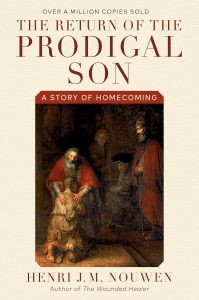 An all-too-common mistake for lifelong practicing believers is to think that some passage from Scripture or doctrine of the Faith is so familiar that we have no more to learn from it. At times this very familiarity can obscure the breathtaking riches of God’s Revelation. In his reflection on one of Jesus’ most beloved parables, as depicted by Rembrandt, Henri Nouwen explores the radical, all-encompassing nature of God’s love, likely to bring some sacred shocks even to the best-catechized Christians.
An all-too-common mistake for lifelong practicing believers is to think that some passage from Scripture or doctrine of the Faith is so familiar that we have no more to learn from it. At times this very familiarity can obscure the breathtaking riches of God’s Revelation. In his reflection on one of Jesus’ most beloved parables, as depicted by Rembrandt, Henri Nouwen explores the radical, all-encompassing nature of God’s love, likely to bring some sacred shocks even to the best-catechized Christians.
The prologue sets the meditations in the context of the author’s experience: Nouwen recalls his encounter with Rembrandt’s painting and why it made such a powerful impression on him at that time in his life. Feeling worn out, lonely, and displaced from extensive travels, “I desired only to rest safely in a place where I could feel a sense of belonging, a place where I could feel at home” (5). This yearning for belonging, for a welcoming embrace, could be called the characteristic plague or famine of the modern world.
As the book moves on into the parable, Nouwen’s approach takes a remarkable tripartite form: how each of us has in ourselves elements of both the younger and the elder son, and how each is called to grow, through receiving the father’s love, into being the father for others.
Many readers will have heard analogies on how to be or not be like one son or the other. If any treat the subject with Nouwen’s depth of understanding, compassion, and gentle wisdom, I have yet to encounter them. At the center of all his meditations is the great truth of who we are in relation to God: “Home is the center of my being where I can hear the voice that says: ‘You are my Beloved, on you my favor rests’ ” (37). One has to read the entire book to get some idea of the force behind these words, describing a love so far beyond what we are accustomed to: one that is truly unconditional, that does not compare the beloved with others, that truly longs for us — yes, for you — and overflows with joy at our return.
All too often, our fallen hearts fail to believe in such a love. “Somehow I have become deaf to the voice that calls me the Beloved . . . and have gone off desperately hoping that I would find somewhere else what I could no longer find at home” (39). Nouwen describes the many voices from without and within, challenging one to prove one’s worth or find security outside of God, and how these can pull one into the prodigal son’s “distant country,” whether for years or for a short time every day.
More subtly, one may live an “obedient and dutiful life” (70) yet become lost interiorly; becoming caught up with complaints, bitterness, and resentment toward those who seem to be loved more, one misses the reality of the Father’s love and the joy of being at home with him. “Trust and gratitude are the disciplines for the conversion of the elder son,” Nouwen says. “Trust is that deep inner conviction that the Father wants me home.” (84).
Nouwen knew too well the “dark voice” that says otherwise, that makes it so hard so often to recognize even that God cares, never mind that he loves so intensely. With good reason does he describe trust and gratitude as “disciplines,” requiring that we choose again and again to let down the guard we put up so instinctively. “Both trust and gratitude require the courage to take risks because distrust and resentment . . . keep warning me how dangerous it is to let go of my careful calculations” (86). The fruits of this discipline, however, exceed all fears and hopes: “The disciplines of trust and gratitude reveal the God who searches for me, burning with desire to take away all my resentments and complaints and to let me sit at his side in the heavenly banquet” (86).
Perhaps no book reveals so thoroughly why one must understand oneself as beloved in order to give love to others. A hungry heart, still desperately seeking love from a world that can never give it, is in a poor position to provide other hearts with that love. Having come home, Nouwen says, and been welcomed as the Father’s beloved children, we are called in turn to take up the role of the father, “who only blesses in endless compassion, asking no questions, always giving and forgiving, never expecting anything in return” (138). This is a daunting call, as Nouwen readily admits, but one for which the graces are given.
The Return of the Prodigal Son has abundant riches to offer anyone who reads it thoughtfully and prayerfully. For the many who suffer from insecurity, scrupulosity, or related forms of darkness, or who give others spiritual counsel, it could well be called a must-read.
S.E. Greydanus is a graduate of Christendom College and managing editor of Homiletic & Pastoral Review.

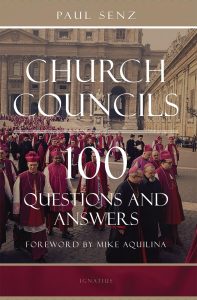
Recent Comments